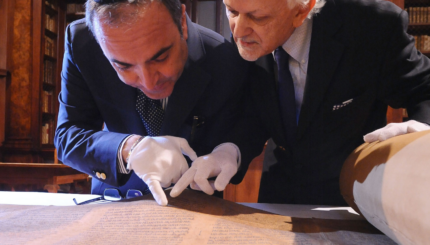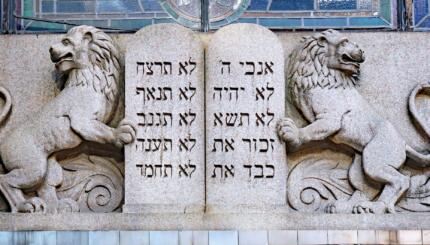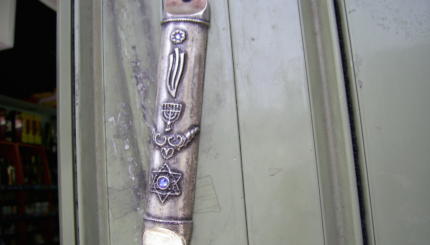Justice is a central theme in the lives of children. From questions of fairness and equality between siblings (“Why does Danny get more than I do?”) to ethical decisions and behavior (“Why is it OK to tell a little white lie?”), kids are engaged in a daily struggle with justice. So then, it follows, childhood is the ideal time to teach your child about justice from the Jewish perspective: .
Pursuing Justice
Tzedakah, colloquially defined as “charity,” comes from the Hebrew root tz.d.k., justice. The Torah, in Deuteronomy 16:20, teaches “justice, justice shall you pursue.” God must have known our kids. Children of all ages understand that justice helps to even out the playing field between people, and that fair treatment is preferred to favoritism. So children naturally understand the Jewish ideals behind tzedakah.
Fair is Fair
For a child, actively giving their money for tzedakah will not likely make sense unless it is their own idea. So in particular situations where children recognize an injustice in their world and question it, help them discover their desire to create change with some leading questions. What is it about this situation that bothers you? How can we help to make this situation more fair? What can we do to help? As parents, you know your children best: allow your child’s natural curiosity to drive the conversation, with some help and guidance from you. Help your child understand that in the end, one of the best ways to help make our world a more just, fair place is to share the resources we have with others who don’t have them. For every child who has ever fought over a toy, this concept makes complete sense.
Getting Ready to Give
Take an evident injustice in the world and use it as a reason to start collecting. Many kids who live in urban environments are all too aware of the homeless and hungry in their neighborhoods. If they are eager to give a few coins every time they see a hungry person, encourage them instead to “save up” by starting a tzedakah collection. This works well for environmental causes that help to keep our dirty world clean and green as well as for pet-rescue and animal protection organizations: go with your child’s interests. Children are also very much aware of other children who have and those who don’t: toys, food, homes, playgrounds, etc. When they ask why, don’t explain away the issue, take the opportunity to explain that the world is indeed unfair, and that we can help make it fair and just by collecting our spare change to help others.

Help us keep Jewish knowledge accessible to millions of people around the world.
Your donation to My Jewish Learning fuels endless journeys of Jewish discovery. With your help, My Jewish Learning can continue to provide nonstop opportunities for learning, connection and growth.
Make the Mitzvah Beautiful
Putting a penny in a jar is fun. But putting a penny into a can painted and decorated by your child is much more fun. Save your recycling for a week and choose the perfect jar or can to hold your collection. Make an art project out of the experience and cover it with paint, stickers, or even tissue paper, and you have a homemade tzedakah box. Other lovely options are to take a trip with your child to a pottery-painting shop and paint a jar or box especially for your coin collection, or even to shop for a child-friendly tzedakah box at a local Judaica store. When the choice or the design is your child’s, the becomes much more fun to perform.
The Decision is Yours
When a child or even a family chooses to collect tzedakah, the excitement lies not just in the collecting but in the determination of the worthiest cause. If your child has a clear interest in a particular organization, collect for that cause. If you aren’t yet sure, collect ideas and have a vote to choose between three or four when your is full. If you can’t decide on just one, give to more than one. A child who is empowered to choose will make an ethically grounded decision, and will more likely feel a deep connection to both the cause and the process.
Make Giving a Ritual
In order to become an instinctive and proactive behavior, children must find a way to ritualize the giving of tzedakah. Some families choose to empty pockets into the tzedakah box each night before bedtime. Others put change into the before lighting candles on Shabbat. Choose the space and time that you would like and make it a part of your family’s routine. Judaism uses time and ritual to sanctify the ordinary: you can do so as well by creating a regular time and ritual for giving tzedakah.
Keep Your Mail
Each year, your mailbox likely fills up with hundreds of pieces of bulk mail soliciting funds for various charitable organizations. Save one or two from each organization. When your tzedakah box is full, go through the envelopes and research these organizations together. Allow your child to make the decision or vote for your family’s choice.
Count
A heavy tzedakah box is a sign of “mission accomplished.” Part of accomplishing that mission, however, is determining how much is actually in the box. Teach counting and addition to younger children and multiplication to older children by counting the coins together. For added (but less educational) fun, take your pushke to a bank with a counting machine and let them do all the work.
Ask for Acknowledgement
When you and your family are ready to send your contribution to the recipient of your choice, include a note from your child explaining why he or she chose this cause. Most organizations will send a return letter with a brochure and special thank you, personalizing the acknowledgement and making it even more meaningful to your child.
Start Over
Once you’ve completed a cycle, start again. Continue to collect for one cause or support another, and take your child’s lead. The rituals that you have created with your family can become a natural and beloved part of your family’s routine, infusing your family’s search for justice in the world with the mitzvah of tzedakah.



